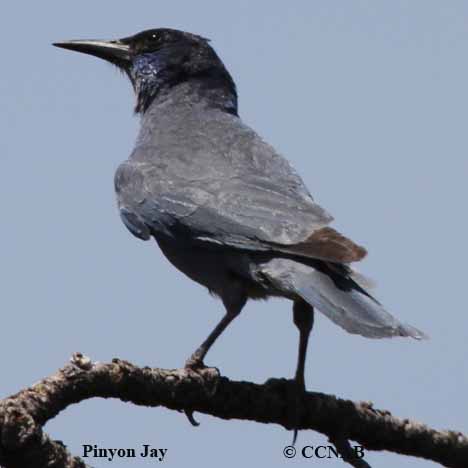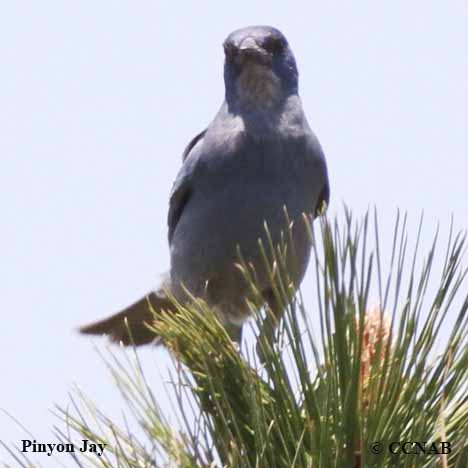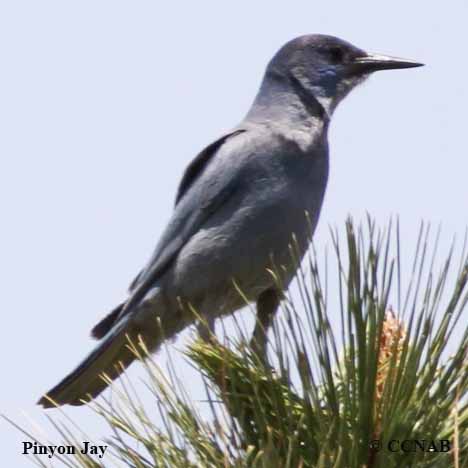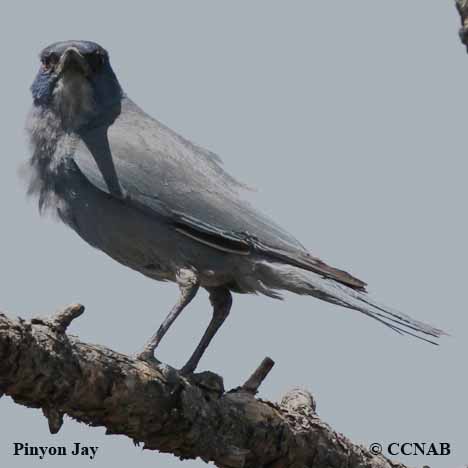North American Bird Search Box
This search box can be used to find bird species using bird's english, french or latin name, or to identify bird by its 4 letter Alpha Code
Field Guide for all the Birds of North America
Pinyon Jay
4 Letter (english names) Alpha Code: PIJA (1)
Geai des pinèdes
Gymnorhinus cyanocephalus
Information, images and range maps on over 1,000 birds of North America, including sub-species, vagrants, introduced birds and possibilities
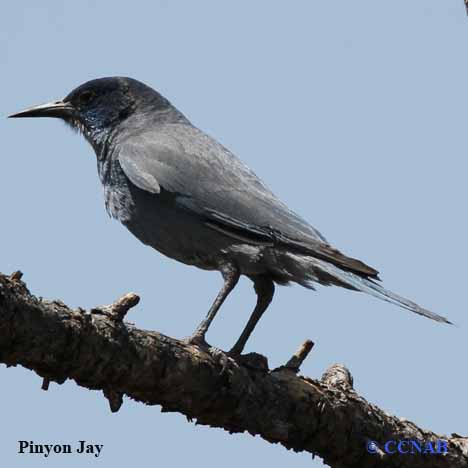
Life, Habitat & Pictures of North American Jays
| B L | W W | W | Family | Latin Name |
|---|---|---|---|---|
| 10.5" 26.7cm | 19" 48.3cm | 3.5 oz 99.2g | Corvidae | Gymnorhinus cyanocephalus |
- Summer
- Year Around
- Winter
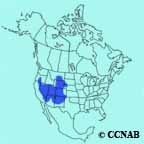
The Pinyon Jay is similar in appearance to the Mexican Jay. It is seen in the southeastern and central states in the US. This large blue bird prefers a conifer type habitat in mountainous terrain. Although, one can come across a flock of these jays in open country in stands of conifers.
Reference to Other Bird Site:
ABA - American Birding Association This site represents an organization that maintains official records of all birds species that have been proven to have been seen inside the perimeters of the North American Continent and the surrounding bodies of water. Regular revised versions are posted to keep the bird list current at all times. This is the list used by all serious birders over their lifetime. You may be aware of the movie called the "Big Year". It was with this list that all the competing birders used in an attempt to set a new record as to how many bird species that could be seen by an individual birder in one calendar year.
